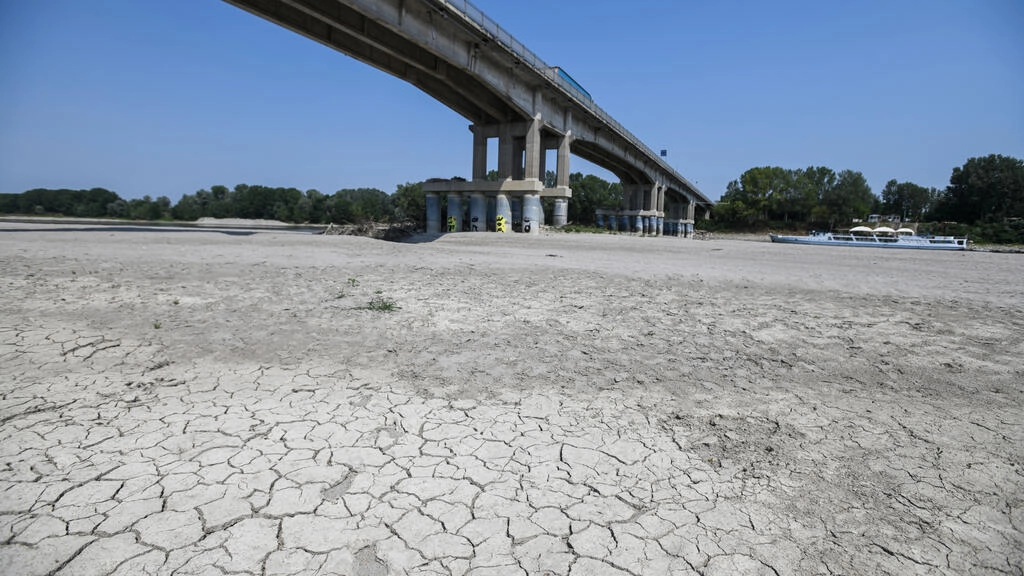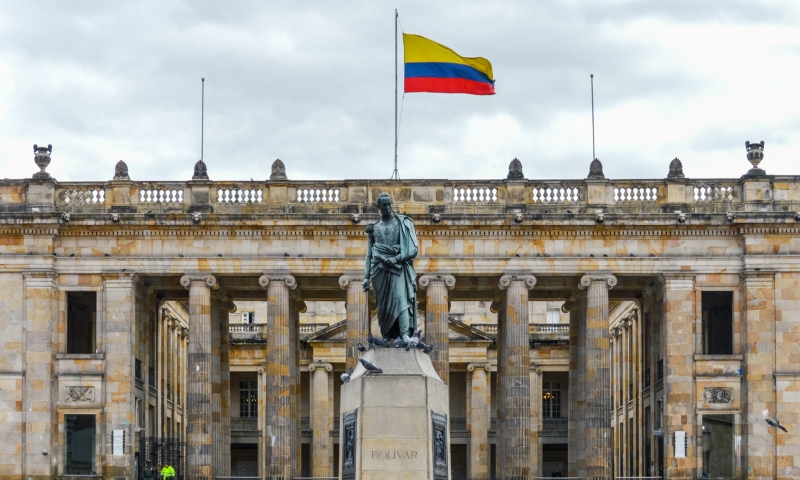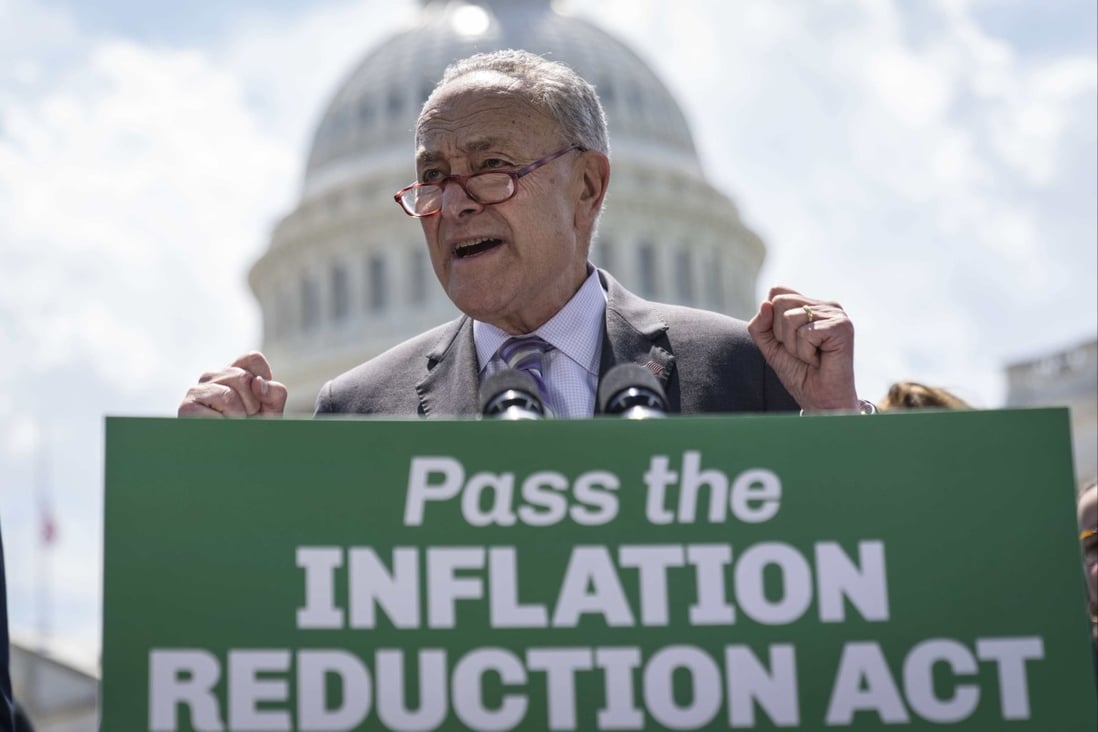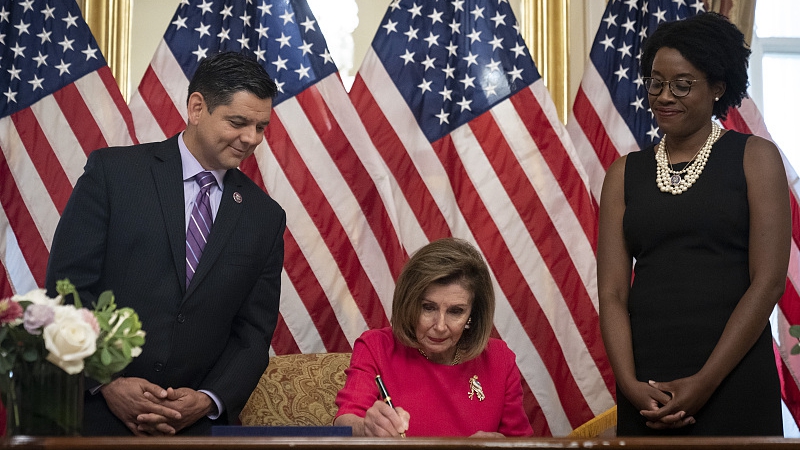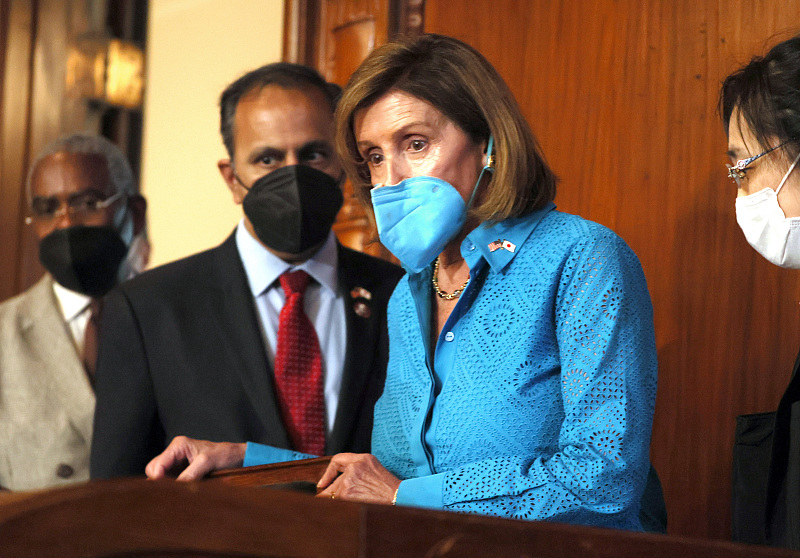Days before he was killed by police after allegedly firing a nail gun into an FBI field office in Cincinnati, the man whom officials have identified as Ricky Walter Shiffer appears to have posted online about wanting to kill FBI agents after the search at former President Donald Trump’s Mar-a-Lago estate.
Screenshots taken from Trump’s social media platform, Truth Social, show that an account using Shiffer’s name, which appears to have been removed, posted a “call to arms” on Tuesday morning, hours after Trump confirmed the raid had taken place at his Florida residence a day earlier.
“We must not tolerate this one,” read one of the posts, which urged others to “be ready for combat” and to “respond with force.
“Kill the F.B.I. on sight,” the post said.
The same account appears to have posted its final “Truth” on Thursday morning, shortly after the attempted breach of the FBI’s Cincinnati office. Authorities said that Shiffer, who was wearing body armor and is believed to have been armed with an AR-15 as well as a nail gun, fled the scene after activating an alarm and led law enforcement officers on a chase that ended in a cornfield, where after a lengthy standoff, authorities say he was fatally shot by police.
The New York Times reported Friday that, for months before he attempted to attack the FBI office in Ohio, federal authorities had been looking into whether Shiffer, 42, of Columbus, had been involved in the Jan. 6, 2021, insurrection at the U.S. Capitol.
Whether the Truth Social account with Shiffer’s name belonged to him has not yet been confirmed. But extremism experts and some federal law enforcement officials said the Cincinnati incident demonstrates the potential harm that can come from the kind of violent rhetoric that has been circulating online in the wake of the FBI’s search at Mar-a-Lago.
“The online trail left by the individual who engaged in that attack illustrates vividly how this type [of] rhetoric can motivate individuals toward real-world violence,” said Jared Holt, a senior research manager at the Institute for Strategic Dialogue.
Holt told Yahoo News that he’s "observed high levels of apocalyptic, violent and conspiratorial rhetoric present in online pro-Trump communities following the search, contributing to a general environment of rage that is not dissimilar to the lead-up to the Capitol riot.
“Similarly to that period,” Holt said, “these expressions of anger are happening in plain sight online and being regurgitated by powerful Trump supporters in government and media.”
Minutes after Florida Politics first reported Monday evening that the FBI had executed a search warrant at Mar-a-Lago, Trump, who was in New York City at the time, took to Truth Social to announce that his “beautiful home” and private club in Palm Beach, Fla., was “currently under siege, raided and occupied by a large group of FBI agents.”
In a lengthy statement, the former president went on to decry the search and declare, without evidence, that he was the victim of “prosecutorial misconduct, the weaponization of the Justice System, and an attack by the Radical Left Democrats who desperately don't want me to run for President in 2024."
News outlets soon reported that the raid had been related to an investigation into Trump's potential mishandling of classified documents. In May, a federal grand jury began investigating whether he had mishandled top-secret documents, including taking 15 boxes of material to the Florida resort.
Nonetheless, Trump’s outrage quickly reverberated across the right, with Republican lawmakers and conservative commentators echoing his claims of persecution.
It didn’t take long for some of the rhetoric around the Mar-a-Lago raid to turn violent. Within hours of Trump’s statement announcing the raid, social media users from Twitter to fringe platforms like Gab, Telegram and Truth Social were issuing calls for civil war and vowing to take up arms. Much of the vitriol was targeted at the FBI, prompting the head of the the Federal Law Enforcement Officers Association to issue a statement Wednesday denouncing “the extreme threats of violence levied against agents at the Federal Bureau of Investigation this week.”
The federal magistrate judge who signed off on the warrant authorizing the search of Trump’s home also quickly became a target after his name was revealed in news reports.
Ben Popp, an investigative researcher with the Anti-Defamation League’s Center on Extremism, said that he conducted an analysis of various platforms popular with extremists, such as image boards like 4chan and 8kun, Telegram groups and TheDonald, and found that use of the term “civil war” spiked on Aug. 9 — the day after the FBI’s search.
“The last time it spiked like that was, interestingly enough, in November 2020,” Popp said, after the contentious presidential election in which the incumbent, Trump, ultimately lost to Democrat Joe Biden. Popp said the recent resurgence in civil war discourse suggests that the search of Trump’s residence is serving as a similar rallying cry for his supporters.
In both scenarios, Popp said, the violent rhetoric spreading across fringe spaces could be traced directly to the baseless conspiracy theories and apocalyptic narratives promoted by Trump and his allies in mainstream forums, from Fox News to Twitter, which seek to paint Republicans as victims, whether of the biased media, vote-rigging Democrats or a politically motivated FBI.
Popp noted a tweet by Charlie Kirk, the founder of conservative advocacy group Turning Point USA, which described the search of Mar-a-Lago as “a military operation against a political dissident.” He described it as just one example of the kind of “apocalyptic narrative” apparently inspiring more explicit calls for violence.
While such “rhetoric is not violent in nature, it’s certainly fueling the violent comments we’re seeing in different spaces online,” Popp said.
Kirk’s tweet was in line with calls to dismantle the FBI from far-right Republican lawmakers like Rep. Marjorie Taylor Greene, R-Ga., and Rep. Paul Gosar, R-Ariz., or Florida Sen. Rick Scott’s comments comparing the FBI to the Gestapo in an interview with Fox Business. Moderate Republicans who have previously acknowledged how Trump’s words can inspire harm in the real world were also willing to jump to the former president’s defense.
House Minority Leader Kevin McCarthy, R-Calif., who said immediately after Jan. 6 that Trump “bears responsibility” for the Capitol riot, issued a statement Monday declaring that the Justice Department had “reached an intolerable state of weaponized politicization,” and threatening to launch an investigation if Republicans win back control of the House in the upcoming midterm elections. Even former Vice President Mike Pence, who was personally targeted by the violent mob on Jan. 6, expressed “deep concern” at what he called the “appearance of continued partisanship by the Justice Department.”
This persecution narrative has formed the basis for a variety of violent posts that have popped up on many of the websites where Trump supporters discussed plans for Jan. 6, such as the pro-Trump message board TheDonald. It also seems to be drawing in some of the same people.
In addition to Shiffer, who had not been charged in connection to Jan. 6, NBC News revealed that at least one user who posted about “civil war” on TheDonald following Monday’s raid is currently awaiting sentencing for his participation in the Capitol riot.
“I think these insurrectionist attitudes haven’t gone away since Jan. 6, it just takes events like this for that to bubble back to the surface,” said Popp.
Popp and Holt, however, noted that there are some key differences between the violent rhetoric stemming from the FBI search and that seen in the lead-up to Jan. 6, 2021, when Trump called his supporters to come to Washington for a “wild” protest to oppose the congressional certification of Biden’s victory in the 2020 election.
Most notably, in contrast to Jan. 6, the violent discourse in recent days has not focused on a singular event or call to action. Popp and Holt predict that any action inspired by the raid is likely to be smaller and less concentrated than the insurrection that drew hundreds to the Capitol last year.
“My leading concern at this time is that the hyperbolic rhetoric could motivate individuals to act violently while believing they are doing so for a broader cause, as we have already witnessed in the attempted breach of an FBI facility in Cincinnati on Thursday,” Holt said.
Federal law enforcement officials are equally concerned.
“[The] bureau is on edge,” said an FBI source, who spoke to Yahoo News on background after the attempted attack on the FBI office in Ohio. “We are all on edge.”
Another official with the Department of Homeland Security said the incident in Cincinnati was “just further evidence that false narratives can lead to real threats and violence.”
FBI Director Christopher Wray issued a statement Thursday condemning the “unfounded attacks on the integrity of the FBI,” which he said “erode respect for the rule of law and are a grave disservice to the men and women who sacrifice so much to protect others.”
Attorney General Merrick Garland echoed Wray’s statement at a press conference Thursday, where he announced that the Justice Department had submitted a motion to unseal a search warrant and property receipt from the FBI’s search of Trump’s Florida home.
“I will not stand by silently when their integrity is unfairly attacked,” said Garland, who noted that he “personally approved the decision to seek a search warrant in this matter.”
Ari Lightman, professor of digital media and marketing at Carnegie Mellon University’s Heinz College, said the violent rhetoric stemming from the Mar-a-Lago raid is just the latest escalation of an extreme polarization on the right that has been on the rise since at least 2008, with the election of former President Barack Obama.
Lightman told Yahoo News that while talk of a new civil war is “really troubling,” perhaps more troubling is the rhetoric from lawmakers and right-wing media figures eroding public trust in all government institutions, whether the FBI or the public school system.
This lack of trust, he said, fuels extremism and perpetuates the notion that “the only way through this is not through discussion or debate, it's through violence.”
Even after a man was killed after attempting to break into the FBI office in Cincinnati, the current campaign to condemn the FBI showed no signs of slowing down. At a press conference on Capitol Hill on Friday morning, members of the House Intelligence Committee’s Republican minority struggled to strike a balance between condemning violence and expressing support for rank-and-file FBI agents, while simultaneously accusing the agency’s leadership of “brazen politicization.”
Meanwhile, rather than release the search warrant himself, Trump spent Friday suggesting that the FBI planted evidence on his property and demanding the release of the documents related to the search of Mar-a-Lago, while pre-emptively attempting to discredit any damning information they may reveal.
By the time the judge ordered the release of documents related to the raid on Friday afternoon, the discussion on platforms like Truth Social and others that hosted some of the most violent rhetoric in the immediate aftermath of the search had turned to a new conspiracy theory positing that such threats, and the attempted attack on the FBI office in Ohio, had been part of a “false flag” orchestrated by the FBI itself.
The goal of such an operation, according to users, was to create a pretext for President Biden to declare martial law and, ultimately, incite a civil war.
Jana Winter contributed reporting.
